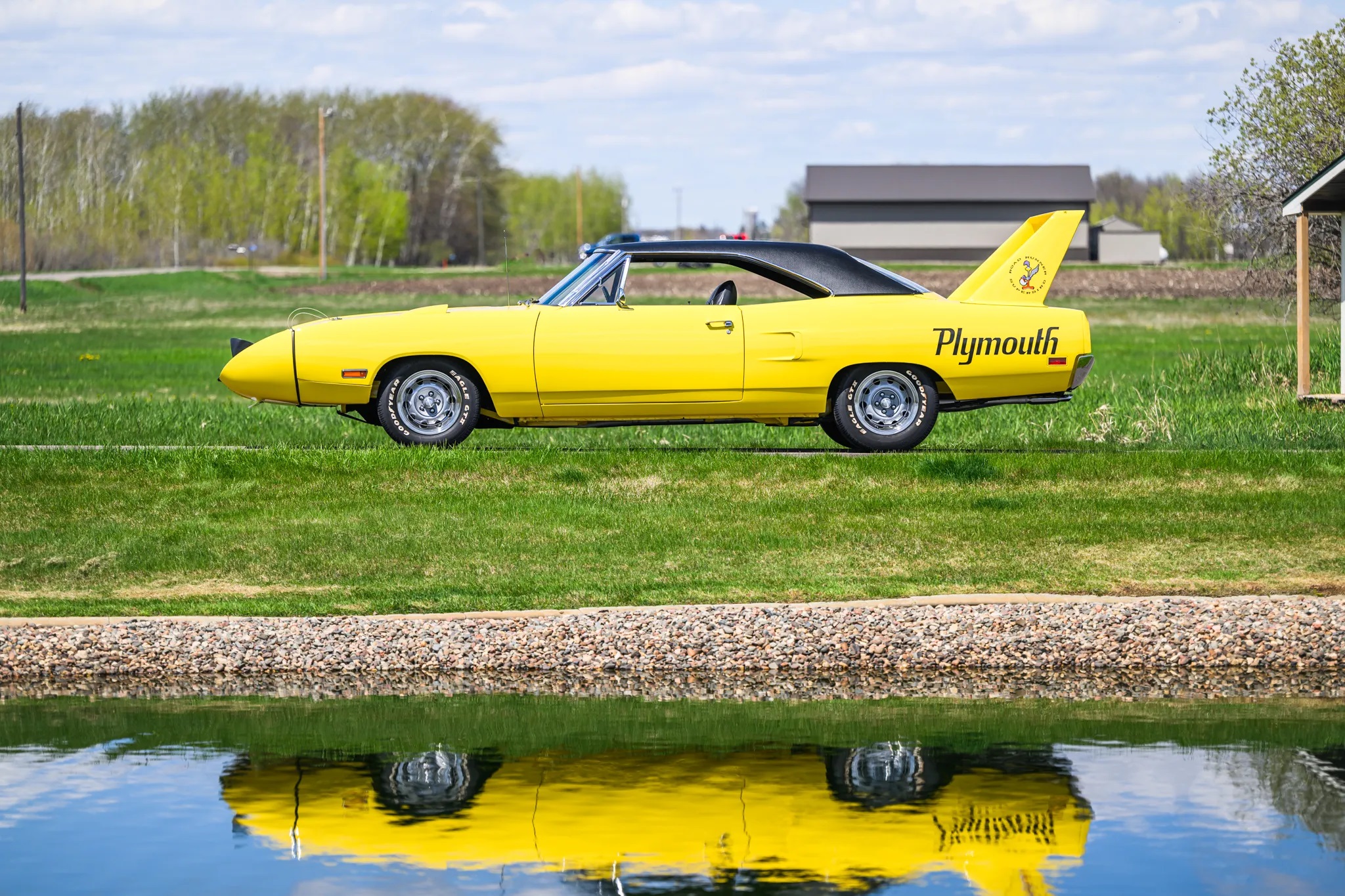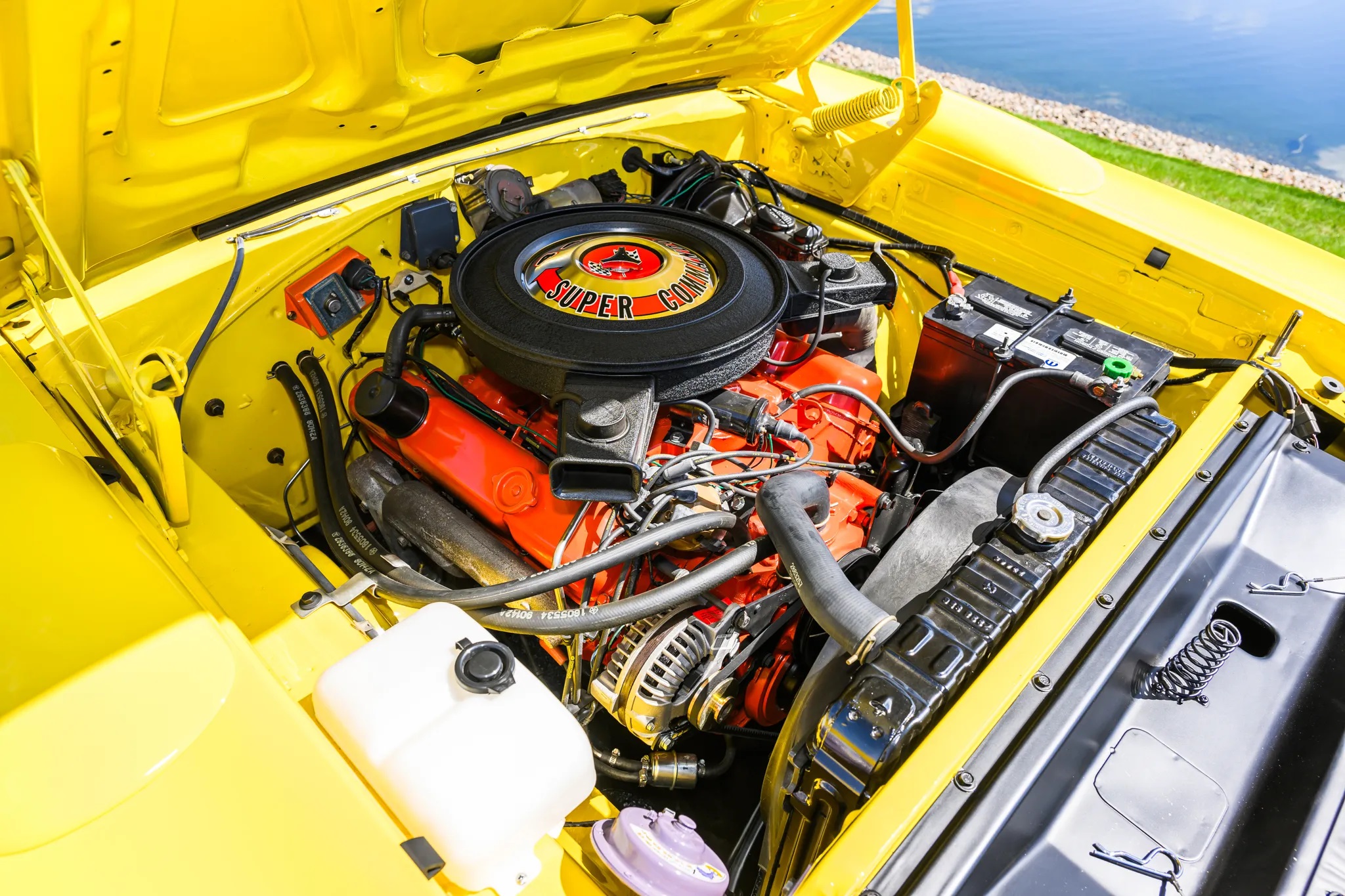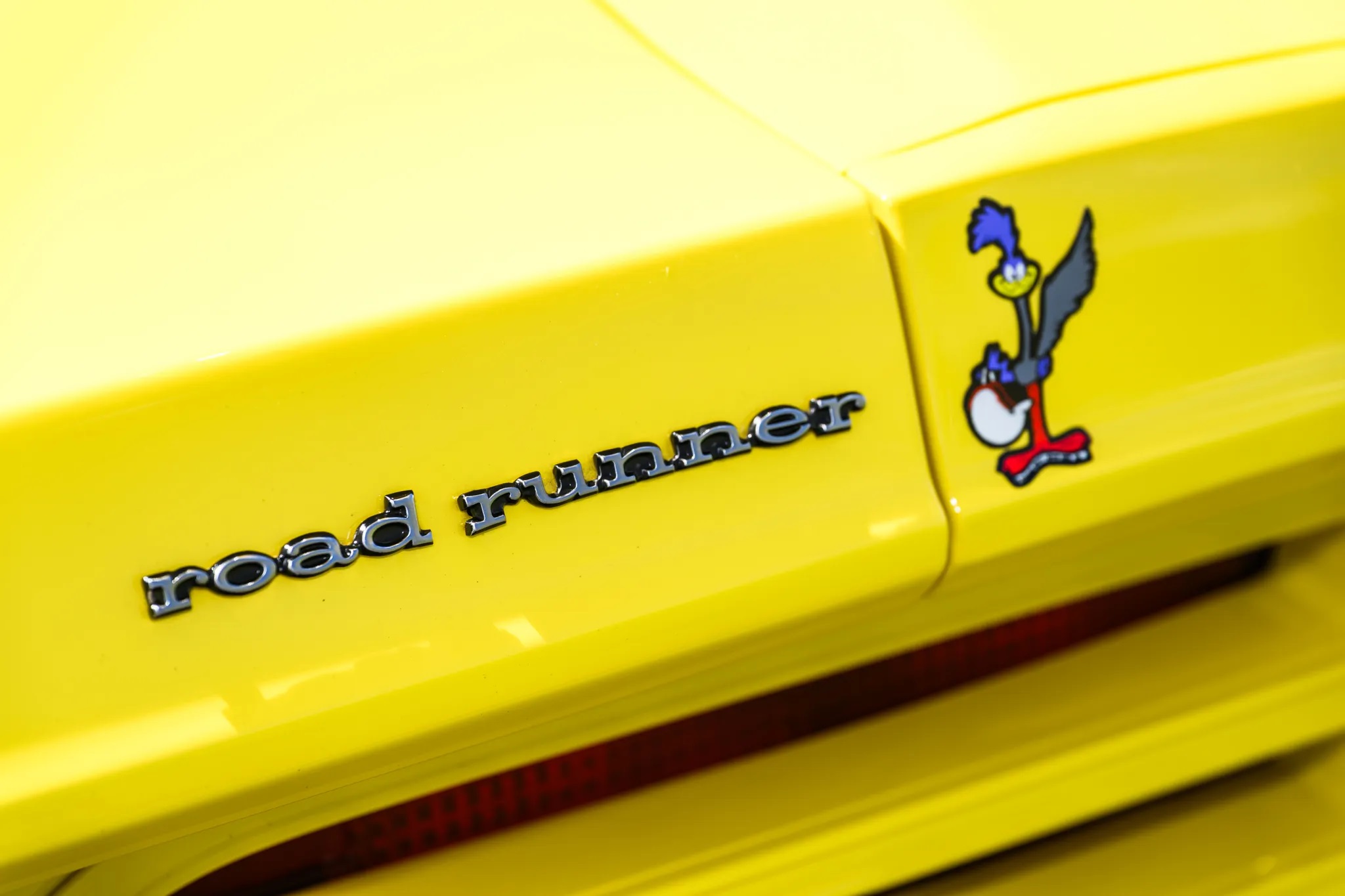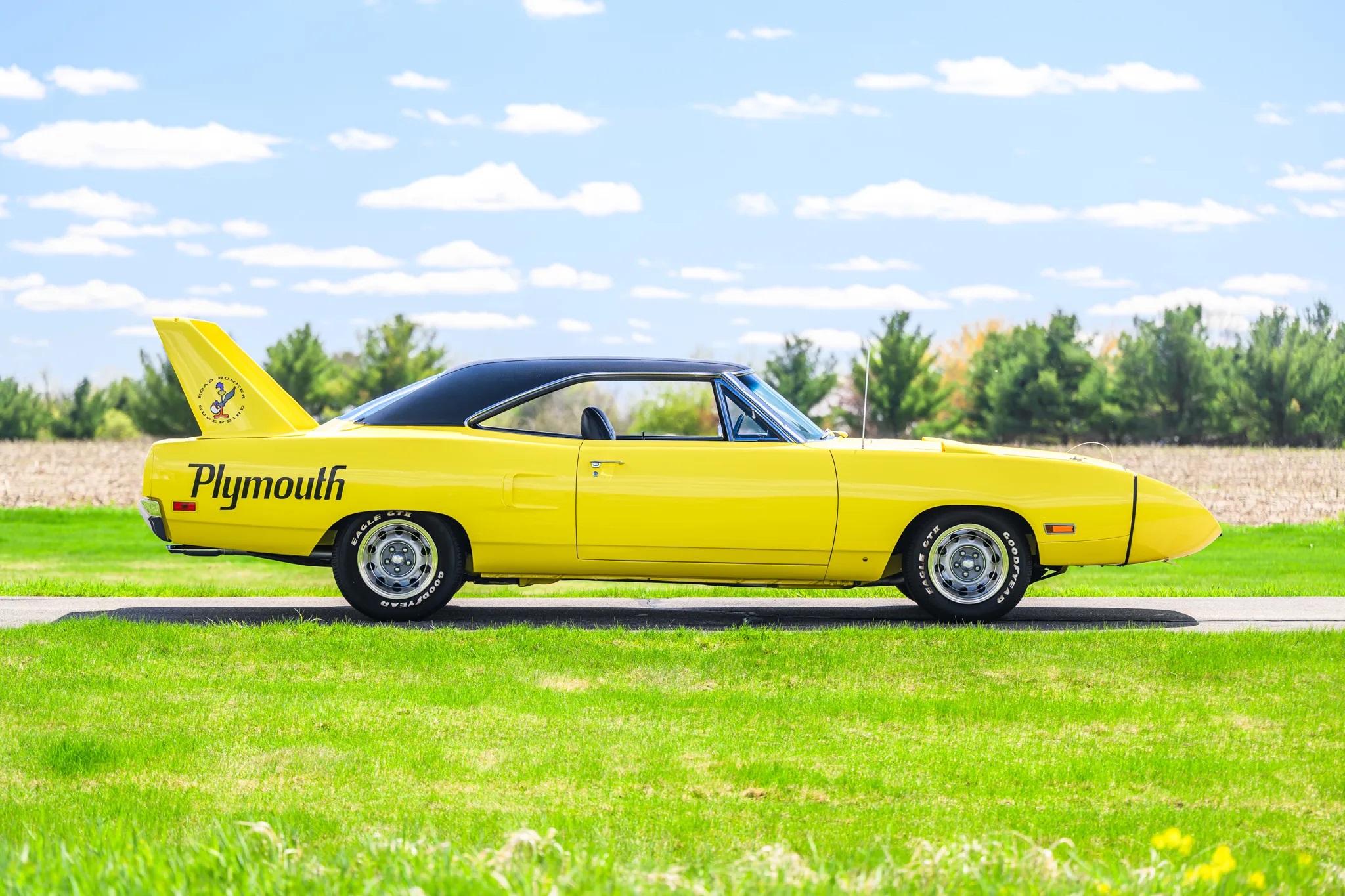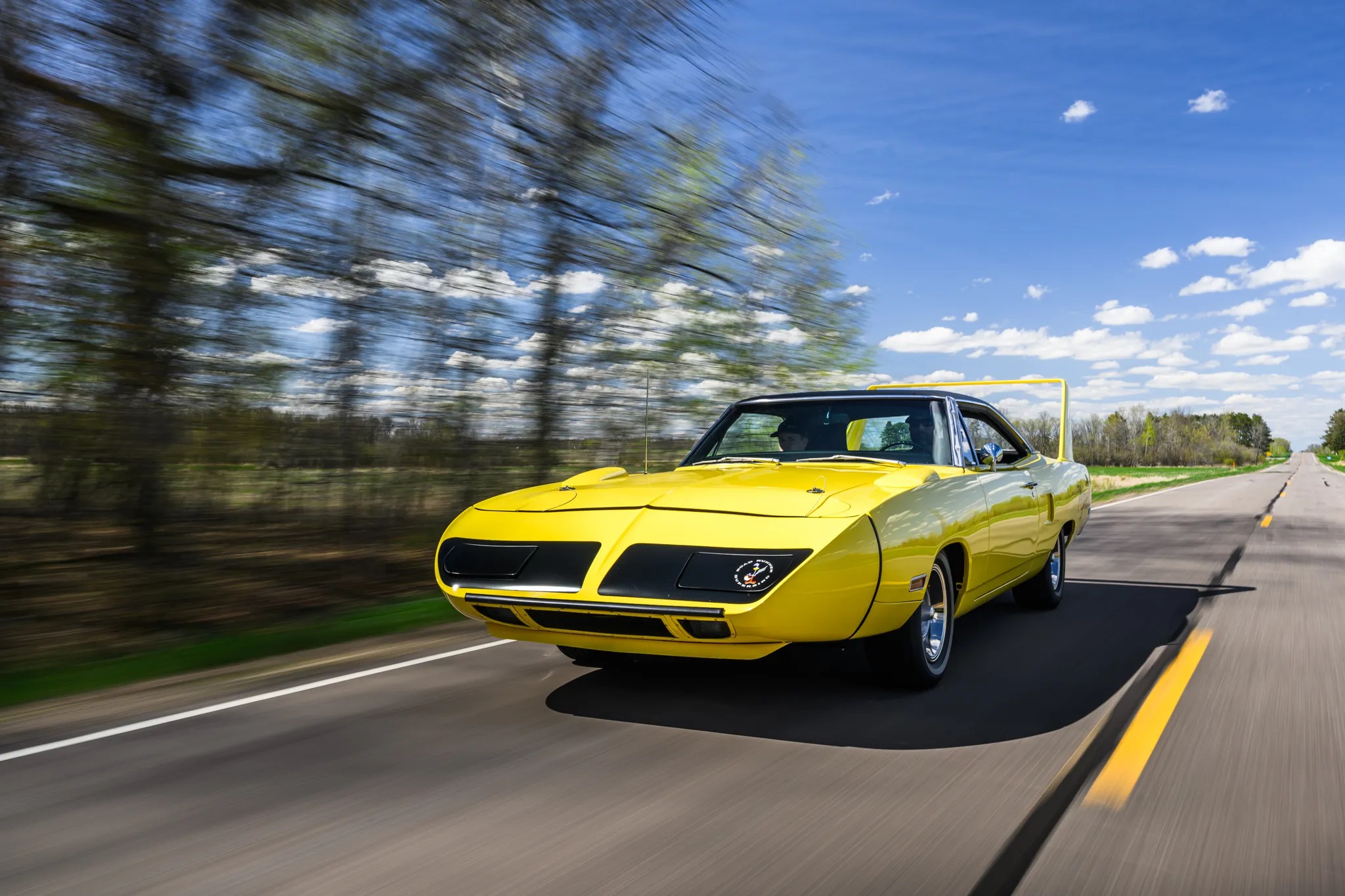Chrysler introduced winged cars in 1969 with the Dodge Charger Daytona, which won its debut race at the Talladega 500. Inspired by this success, Plymouth developed the Superbird, a modified Road Runner, for a few months in late 1969.

This complex muscle car featured a smoothed body, retractable headlamps, and an aluminum nose cone. Unlike the Daytona, the Superbird had a longer nose by an inch and rear-facing fender scoops for wheel clearance. Its iconic rear wing, set further back and inclined towards the body’s centerline, was designed to allow the trunk to open without obstruction while providing maximum downforce.
To meet NASCAR regulations, Plymouth had to produce around 1950 units, far more than the initially required 500. This push for higher production brought Richard Petty back from Ford. In 1970, the Superbird offered engine options like the 440 6-bbl with three 2-barrel carburetors, the Hemi, and the 440 4-barrel.

Buyers could choose the D21-code Pistol Grip 4-speed for a sportier drive. The car came in vibrant colors like Lemon Twist Yellow, Petty Blue, Tor-Red, and Vitamin C Orange, featuring Road Runner decals. Despite its advanced design, the Superbird’s radical look led to many unsold units by 1972. Today, however, it is a prized possession among muscle car enthusiasts.
Photo Source: Bring A Trailer



